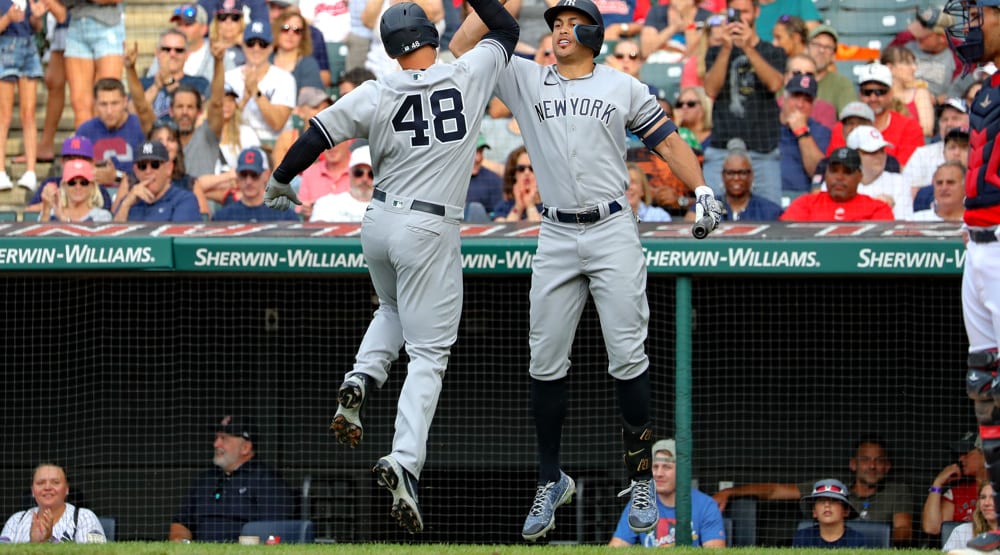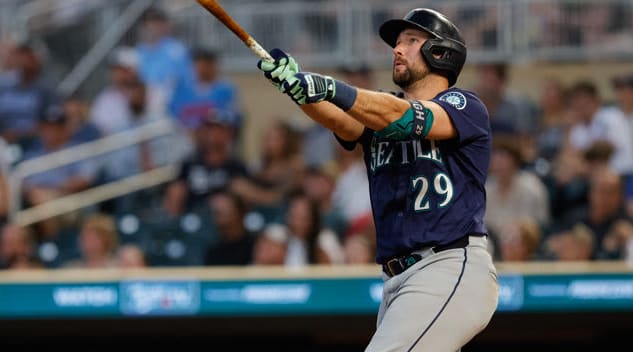Last time in my Scouting 101 series, I left off discussing catchers and the tools of ignorance. Let's turn the page and finish off the battery by dissecting the art of scouting pitchers.
In earlier articles, I've talked about evaluating how a pitcher's arm operates, and projecting on his body type. First though, let's get through the obvious components in scouting pitchers with the almighty radar gun readings. No matter what a scout tells you, we all care about that one number. Sure, a myriad of other factors are involved in evaluating a pitcher. However, we don't all sit behind home plate holding a radar gun for an hour because it's not important. When grading a young, high school age pitcher for instance, it's probably the most important element in determining how much we like a guy. A 17 or 18-year-old throwing 92+ mph consistently is going to be a lot more liked than one throwing 87-89. Even if the kid throwing 87-89 has other parts to his game that are more enticing. The bottom line is, the teenager who pumps low-90s or better on a consistent basis will be considered in the first round. Name me the last time a high school age pitcher who didn't have a 60 or better fastball velocity got drafted in the first round. There might be a lefty or two with tons of projection who got snapped up later in the first round, or more likely the supplemental round. But, the radar
Last time in my Scouting 101 series, I left off discussing catchers and the tools of ignorance. Let's turn the page and finish off the battery by dissecting the art of scouting pitchers.
In earlier articles, I've talked about evaluating how a pitcher's arm operates, and projecting on his body type. First though, let's get through the obvious components in scouting pitchers with the almighty radar gun readings. No matter what a scout tells you, we all care about that one number. Sure, a myriad of other factors are involved in evaluating a pitcher. However, we don't all sit behind home plate holding a radar gun for an hour because it's not important. When grading a young, high school age pitcher for instance, it's probably the most important element in determining how much we like a guy. A 17 or 18-year-old throwing 92+ mph consistently is going to be a lot more liked than one throwing 87-89. Even if the kid throwing 87-89 has other parts to his game that are more enticing. The bottom line is, the teenager who pumps low-90s or better on a consistent basis will be considered in the first round. Name me the last time a high school age pitcher who didn't have a 60 or better fastball velocity got drafted in the first round. There might be a lefty or two with tons of projection who got snapped up later in the first round, or more likely the supplemental round. But, the radar gun tells us a lot about the value of an amateur pitcher.
There are a lot of high school pitchers who sit at 90+ or even 93-94 but they don't sniff the first round. This is because they have a lot of "hickies" and don't possess a lot of the other skills we look for. For instance, they probably have poor command, lack a good secondary pitch, or, and this is very true, pop-up late on the scene, or live in an area where they didn't receive much exposure. The pop-up pitcher is one who comes on late in the spring in his senior year. Scouts who don't have a long history with a pitcher won't push to have him drafted high. After all, a scout is putting his job on the line with every scouting report and when his Scouting Director asks him to pref players out, the ones they have a good history with are those that tend to get pushed to the top of draft boards.
Hayden Simpson is a great example of this. The Cubs took him in the first round in 2010. He was a late bloomer and shocked some scouts during a few late season performances throughout his senior year. I remember vividly sitting in regional draft meetings in May before the June draft of 2010 and listening to one of our most prominent and successful scouts tell us that he's fools gold. He warned our guys not to trust him because he's just a mirage who's timing couldn't be better for him. He was right, because the truth is that had he rifled off these performances the year before or even the summer prior, he wouldn't be trusted months later. In other words, a great summer does not make a solid first rounder if it's not continued in the spring. Many times those who come into their draft year and have mediocre spring seasons won't get selected with a first round pick. Some clubs are willing to take a chance on what they have once seen before, but most aren't willing to commit the seven figures and their top pick to a guy who is not performing just months before the draft. Furthermore, Simpson was from Arkansas and was not a major showcase guy. He fit a lot of the criteria that we generally reserve for the supplemental round. Yet the Cubs were tempted by some pretty stellar performances at the right time. Or, should I say, the wrong time.
Other factors, and we can pick on Simpson again, are size. High school age pitchers who don't reach above six feet tall are generally not first rounders. Take Tyler Chatwood as an example. If he was 6-foot-2 or 6-foot-3, he probably would have been a sure fire top-30 pick. He's a tremendous athlete with a strong frame, excellent aptitude and "stuff." He was 90-94 mph in high school with at the time, a double projection curveball. Double projection is when we grade out a tool or skill at a 50 and project it out to be a 70. Or, 40/60.
Take Casey Kelly of the Padres (drafted by the Red Sox) for instance. He was the 30th overall pick in the same draft as Chatwood. Both were premium athletes, though Kelly had a bit better pedigree, and it doesn't hurt to have a full ride to play quarterback at Tennessee. I saw them both and while I liked Kelly better, I always wondered how they could be different if Chatwood were just two inches taller. It's much easier to project on the more angular and taller high school arm than it is on the square, shorter and stalky body. Kelly is the former and Chatwood most certainly is the latter. It was difficult to project on Chatwood where as scouts were drooling over Kelly's projection. This is what I'm talking about though, the height plays a major factor in that elusive first-round pick versus the guy who goes in the supplemental or even second round like Chatwood.
There is another, more gigantic factor in a pitcher's value and whether he is perceived as a first rounder. That factor is simply age. The 21-year-old college junior gets much more credit and more opportunities to be taken in the first round than the 18-year-old high school kid. Scouts claim all the time that they don't care about stats or even look at them. Trust me when I say that when fighting for a guy to get picked, it's amazing how many references there are to a college pitcher's SO/BB ratio, GB%, etc. When it helps to prove your point, stats are generally a scout's friend. Today, most teams are using some form of statistical analysis at the college level to aid them in their draft each year. When it comes to selecting players though, the roots of scouting still dominate the conversation and still have the most influence on where a pitcher gets taken.
Mike Leake and Sonny Gray are two very recent examples of the age phenomenon mentioned above. Both of them as 18-year-olds were not trusted nor perceived as even close to being first rounders. Leake went in the seventh round out of high school and Gray in the 27th. There is something about the college game though, be it through statistical analysis and the "safety" nature for which a more mature, advanced pitcher creates. Baseball, while a pure scouting based entity relies on performance. It always has, even before the days of Bill James, Michael Lewis, and Brad Pitt. Performance tells a story, it dictates how much we like a guy and it provides "proof" of what a guy can do. It's the old adage of risk versus reward. Just like stocks, we love an undercover asset that we suspect is going to move. That stock comes equipped with a lot of volatility and downside, but the reward and payoff could be tremendous. But, we generally like a stock that has proven performance and the analytics justify the means. Same in baseball, the same Mike Leake and Sonny Gray were barely blips three years earlier as short right-handers. Watching them pitch and perform extraordinarily well in college at major D-1 programs helped justify the means. Just think if Tyler Chatwood had gone to college and performed as well as Leake or Gray. Suddenly, you're talking about a mid-first rounder versus a second-round pick.
I'm not saying it's that simple, but the fact remains a short 18-year-old high school pitcher is too risky. Three years later though, the same bodied pitcher at a major D-1 program could be a top-15 pick in the nation.


























